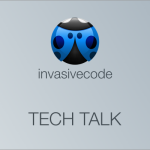AI, AR, UX & VR. We’re Living In The Future. Designers Need To Be Prepared.
The Waze traffic navigation app, Pokémon Go, Google Cardboard, the Amazon shopping recommendation tool — each of these uses the kind of technology once found in sci-fi stories and futuristic fantasies. But the very existence of these programs, applications, and devices, and the fact that many of them are in daily use, demonstrates that the future is now.
In fact, it’s not just now, it’s actually then – it started awhile ago. According to a report from Juniper Research, by 2019, the use of augmented reality in business apps is projected to grow tenfold from where it was in 2014. That’s an increase of $2.4 billion and we’re right in the middle of it.
This is more than a trend. It’s a revolution that’s already gaining ground. Designers and developers, if you’re not already up-to-date, it’s time to get to know this technology.
The Basics: Defining the Terms
AI: Artificial Intelligence
AR: Augmented Reality
UX: User Experience
VR: Virtual Reality
It’s a lot of acronyms to process, but understanding each of them is important. They aren’t all specific technologies, but each is vital to the conversation and the end goal of your product.
Let’s start with AI (Artificial Intelligence).
Artificial Intelligence
Hollywood has long portrayed artificial intelligence (AI) as one kind of robot or another. A servant to humanity that invariably outsmarts the people it was created to serve, with disastrous (or at least deeply disturbing) consequences.
In real life, you might not be asking HAL to open the pod bay doors, but you’re probably relying on some similar, real-life version to navigate you through your morning commute. The Waze and Google navigation apps are among the most popular forms of AI technology in current use. The programs use data inputs combined with machine learning to solve the problem of how best to get you where you’re going. The apps “learn” about traffic conditions, making “decisions” on-the-go about whether or not to keep you on the same route or take you in a different direction.
It’s likely the last customer service representative you chatted with online was actually AI, too – a so-called “chat bot,” programmed to respond to specific keywords from you, the customer, learning and adapting as the conversation progressed, until a satisfactory outcome was delivered.
AI is actually an umbrella term for several types of technologies – chat bots, virtual reality, machine learning, augmented reality, and robots, among others. We’ll be discussing several of these, below.
Augmented Reality (AR)
Augmented reality superimposes a layer of computer effects or animation onto the existing landscape in a way that combines the two. NFL fans might remember when this technology broke through into popular use by way of America’s living rooms, back in 1998. That’s the first time Sportsvision used the 1st and Ten system to cast a yellow first down marker during a live NFL game. The line, created using augmented reality, made it easy for the folks at home to keep their eye on the goal, so to speak.
In a more recent and wildly popular example, players of the game Pokémon Go use the viewfinder on their cellphone cameras to track characters in the game. The landscapes are real, but the adorable, baby-faced creatures they’re seeing on their screens are not. The entire game is an intelligent interplay between the existing world – the streets, landmarks, and architecture of real life – combined with the engineering of the Pokémon Go people, making it look as if the fictional animals are inhabiting the regular world. Look up from the screen and everything disappears. Look back on the screen and the regular world is, once again, augmented by computational wizardry.
Augmented reality is a combination of virtual reality and actual reality, and the best versions combine these things seamlessly, allowing users to experience a technological upgrade to their day-to-day existence, using as few additional inputs as possible. Indeed, the football marker was a huge hit because it integrated into users’ already-established viewing patterns – they could enjoy the benefits without having to add additional technology. The beauty of Pokémon Go is that nearly everyone carries a cellphone everywhere, anyway, and that’s the only hardware required to play the game. The challenge for designers is to remember that often their ingenuity is best displayed by being entirely invisible within the greater user experience.
User Experience (UX)
Now that we’ve mentioned the term, it’s probably a good time to talk about this component and why it needs to be a vital piece of your overall design concept.
User Experience, as the name implies, is a combination of the ease of use, intuitiveness, fluidity, and integration between the person who uses a product, and the product, itself. Put more simply, user experience describes, well, the experience someone has when they use a product or program. Was the site easy to navigate? Did the controller feel natural in their hand? Was the menu located where they expected to find it? Was the game challenging enough to hold their attention, but not so difficult that it felt hopeless?
Good user experience is almost predictive – it delivers what the user wants before the person even has a chance to register they want it. It keeps one eye on how to navigate the experience, and the other eye on how to navigate within it. And all of this complicated engineering should remain completely invisible to the person at the controls.
Good UX also means the overall experience is enjoyable. This is vital to remember in an age of $800 HTC Vives and Oculus Rift systems for $400: The fewer the inputs – whether that’s complicated taxonomies, heavy headsets, or expensive components – the better the overall end-user experience. This is an age where the best design disappears within the experience. It’s a rookie move to require expensive tech, just because it’s there, or to load your programs with bells and whistles that show off your design prowess, without giving any consideration to how all of that flare will actually impact the natural flow of the program, or if it’s even necessary at all.
Virtual Reality (VR)
We’ve talked about augmented reality and how it’s a computer-generated layer placed on top of the actual environment in which we live and with which we interact. Augmented reality is a subset of virtual reality – the latter technology being an umbrella term describing an entire realm of fabricated worlds and objects.
Typically, when we see the term used, virtual reality is referring to more immersive experiences. It is games like Lone Echo, where players wear a headset to fully integrate into the universe of the game. We also see it in training scenarios where doctors practice intricate surgeries on computer-generated patients; and would-be astronauts prepare for upcoming missions, living the experience of an emergency in space while safe within the terrestrial confines of a NASA training pod.
Virtual reality is a powerful new technology for both work and play, and it’s so new that those who are currently working in the field are tomorrow’s pioneers. Obviously there are rewards to being at the forefront of a blazing-hot new technology, but knowing the downsides are important, too.
With a technology this nascent, most users haven’t had reason to obtain the hardware. In some cases, like creating a military training simulation, maybe this won’t be an issue. But if you’re designing for a client who wants to create a technological “next big thing,” one has to ask themselves if that’s even possible when most people can’t access it in the first place. Do you want to design something groundbreaking, or do you want to deliver something useful to your client? With VR, those might mean two different things.
Another consideration is the user experience, as we discussed above. Designing a game where the user is watching the experience is very different from designing in a way where the user is part of the experience. A mobile app, for example, is a very different beast than a program where someone is moving within an immersive environment.
VR is a whole new world, literally and figuratively. It’s changing how we interact with our devices. Today’s designers can help create how we interact with this planet and create gaming environments beyond our wildest imaginations. If you want to design for the future, it’s time to start now.






